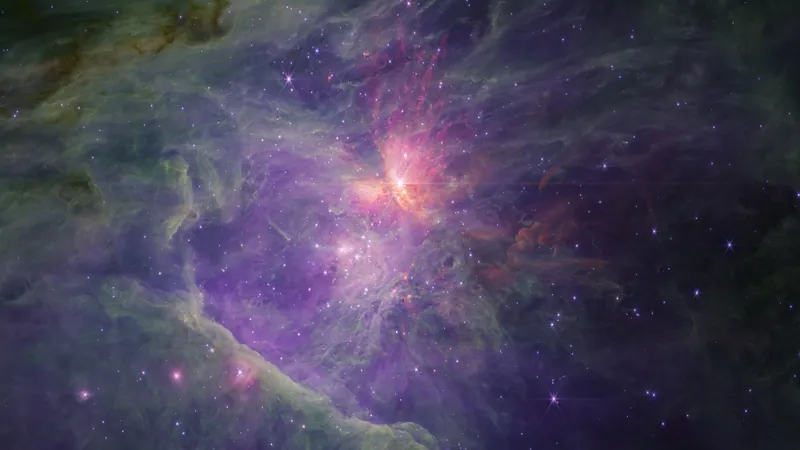
Are They Real? New Simulations Cast Doubt on James Webb's Mysterious 'JuMBOs'!
2025-06-25
Author: Wei
JuMBOs: The Cosmic Mystery Under Scrutiny
The elusive 'JuMBOs,' pairs of Jupiter-like objects recently observed by the James Webb Space Telescope (JWST), may not exist after all! A groundbreaking study suggests these cosmic entities, thought to comprise two gas giants, could be even rarer than previously believed—raising critical questions about their very existence.
What Are JuMBOs?
JuMBO, short for 'Jupiter-mass binary objects,' refers to pairs of giant, planet-sized bodies spotted in the Orion Nebula Cluster. Each pair, weighing anywhere between 0.7 and 30 times the mass of Jupiter, doesn’t orbit any star. Instead, they float freely in space, dancing around each other at distances of 25 to 400 astronomical units (AU)—where one AU equals about 93 million miles, the distance from Earth to the Sun.
A Challenge to Planetary Formation Theories
These free-floating pairs challenge conventional theories of planet formation. Scientists have proposed several ideas on how JuMBOs might have come into being, suggesting they could be former companions of a star or remnants of a star-forming process. Yet, doubts remain loud and clear!
Skeptics Question Their Existence
In 2024, astronomer Kevin Luhman re-evaluated JWST's observations and theorized that these pairs might not be planets at all—they could simply be distant background objects captured during observations of the Orion Nebula. This revelation sparked further investigation into the reality of JuMBOs.
Simulations Reveal Shocking Truths
To probe deeper, researchers including Richard Parker from the University of Sheffield conducted simulations to examine how long JuMBOs might survive in their bustling birth environments. The model mimicked the dense stellar nursery of the Orion Nebula, featuring 1,500 components.
The results were astounding! In a dense environment, a staggering 90% of JuMBO pairs were obliterated within a million years. Even in more favorable conditions, only half managed to survive any disruptions, suggesting that these supposed cosmic pairs are incredibly fragile.
A Disturbing Conclusion
The study's findings, published in the *Monthly Notices of the Royal Astronomical Society: Letters*, suggest that observed JuMBOs might not just be rare but possibly non-existent. To account for the numbers detected by JWST, there would need to have been a far greater initial population—leading many to believe these JuMBOs are nothing more than cosmic background noise.
The Road Ahead
As the debate continues, Parker encourages further analysis of the original JWST data. Will we ever uncover the truth about these mysterious objects, or will they remain an unsolvable enigma of the cosmos? Only time—and more research—will tell!






 Brasil (PT)
Brasil (PT)
 Canada (EN)
Canada (EN)
 Chile (ES)
Chile (ES)
 Česko (CS)
Česko (CS)
 대한민국 (KO)
대한민국 (KO)
 España (ES)
España (ES)
 France (FR)
France (FR)
 Hong Kong (EN)
Hong Kong (EN)
 Italia (IT)
Italia (IT)
 日本 (JA)
日本 (JA)
 Magyarország (HU)
Magyarország (HU)
 Norge (NO)
Norge (NO)
 Polska (PL)
Polska (PL)
 Schweiz (DE)
Schweiz (DE)
 Singapore (EN)
Singapore (EN)
 Sverige (SV)
Sverige (SV)
 Suomi (FI)
Suomi (FI)
 Türkiye (TR)
Türkiye (TR)
 الإمارات العربية المتحدة (AR)
الإمارات العربية المتحدة (AR)